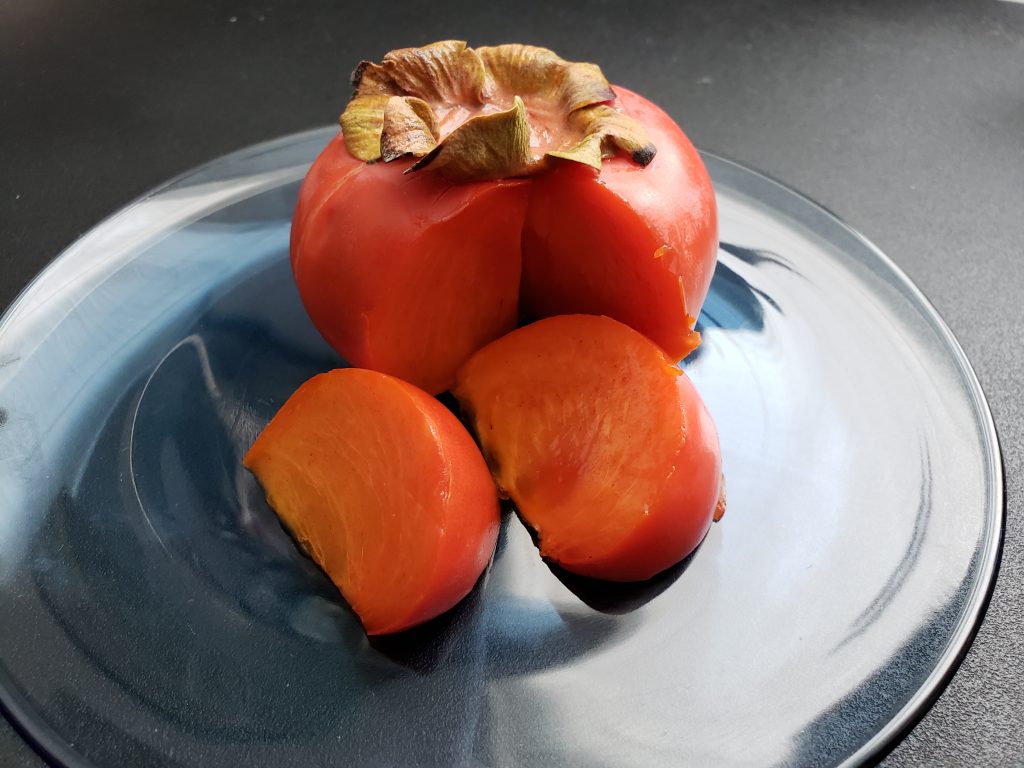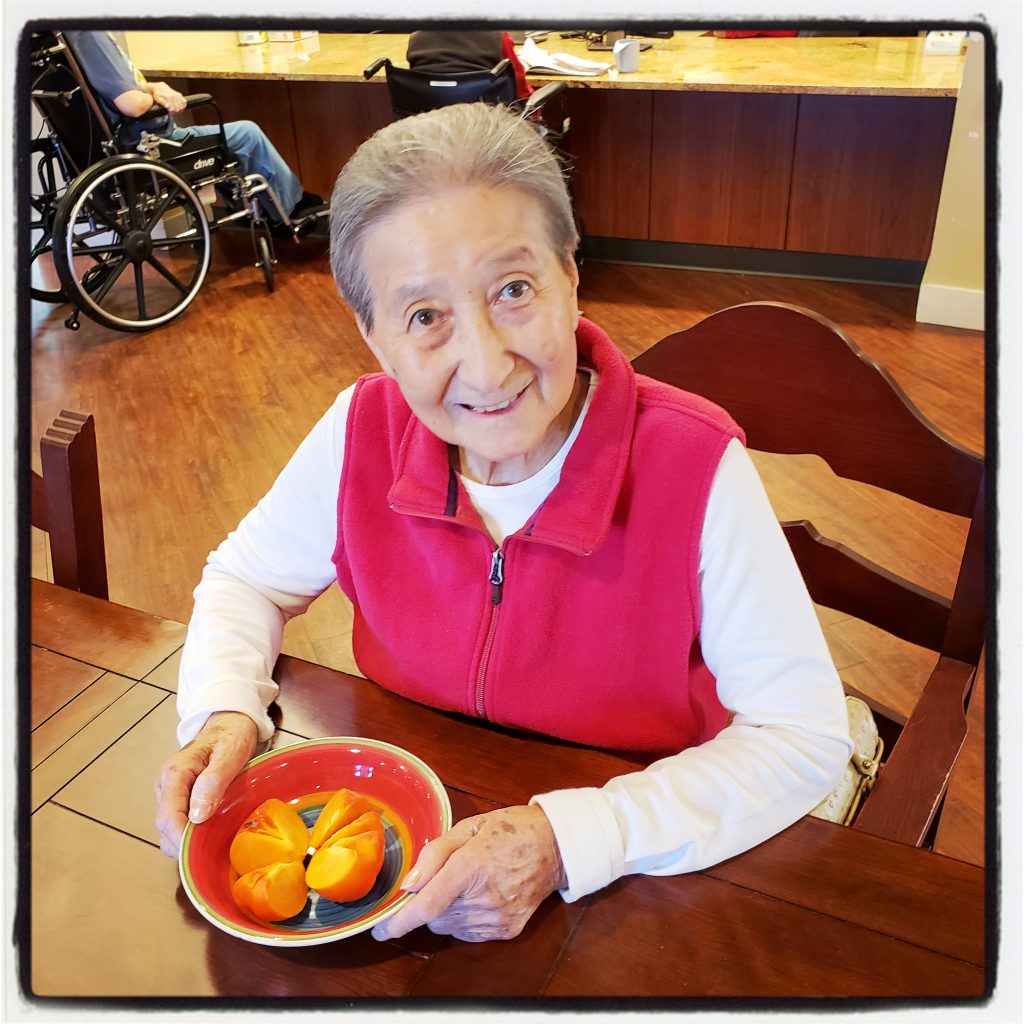01 Dec Fruitful thinking: Why I love persimmons

I love kaki. That’s Japanese for persimmon.
Not everyone knows what a persimmon is, so let me explain. Persimmons are a popular fruit that is grown through much of Asia. The Japanese call it “kaki” (kah-key). Kaki are wonderfully sweet when they’re ripe, but depending on the strain of kaki, they can be bitter.
I learned to love kaki as a kid growing up in Japan.
One house where we lived in a district in Tokyo had a kaki tree in the front yard. I remember climbing its gnarly branches and plucking the fruit when it ripened and eating it like an apple — only softer and much sweeter. I also picked up kaki from the ground when they fell. Once they drop they’re ripe enough to eat.
The Fuyu strain of persimmon looks like an odd tomato (which, as we all know, is a fruit, not a vegetable!). The fruit is shaped like a squat tomato, with a dry leafy crown at the top that connects to the tree, but the skin is generally a bright orange, never red like a tomato. You can cut around the crown like you might with a strawberry and leave a little crater, then cut the fruit into quarters or eighths. Or you could slice off the top, but that wastes some of the precious fruit around that crown.
Kaki gets very soft when it’s ripe. But no worries – it’s messy but still delicious, only it’s the consistency of a sweet pudding inside the skin of the fruit.
The Hachiya type of kaki is the kind that can be bitter. An unripe Hachiya kaki is super astringent and bitter to the taste. You have to let it ripen just right, or when you bite into one, your mouth will feel like you just stuffed it with cotton. Once it’s ripe, though — meaning soft or even very soft — it’s sweet. Hachiya kaki are perfect for drying in a dehydrator, and you can find packages of wrinkly, dried Hachiya in almost any Asian grocery store.
To me, kaki are the quintessential Japanese fruit because I’ve had them since my childhood. But it turns out that kaki are also a quintessential Japanese American fruit. Sadly, kaki don’t grow in Colorado, so we can’t pick them off a tree in our yard. But JAs on the West Coast who are lucky enough to have kaki trees treasure the fruit.
My wife Erin and I have been the beneficiaries of family members and friends on the West Coast who have been kind enough to box up persimmons in the fall and ship them to us. We know a lot of JAs in Colorado who are excited to receive these “care packages” — albeit heavy ones — from out of state. We’ve even gone to California during kaki season and bought a case from a market to bring back to Denver.
We’ve scheduled our trips to Japan in the fall to coincide with kaki season, so we could feast on them in their home turf. Late fall and early winter is also the harvest time for the incredibly sweet, juicy Japanese tangerines, or o-mikan, and of course the beautiful colors of fall foliage, so it’s not just the kaki that we schedule around. Naw, kaki are the main reason….
In Japan, we’ve even sought out kaki candy at department stores and at souvenir gift shops. If we can’t have the actual fruit, we’ll have a sweetened confectionary version.
There are recipes for persimmon pie and persimmon jam, but we’ve never taken the time to have our kaki any other way than just eating them like an apple. If we’re feeling formal, we might slice the persimmon into quarters or eighths. Or if we don’t feel like eating the sometimes tough skin, we’ll peel the fruit before slicing it up.
Our neighborhood supermarket sells persimmon, but they’re puny and expensive, sold individually. Thank goodness Costco has nice big kaki in trays of eight at a good price – we can buy a tray, snack on a few for ourselves and take the rest one or two at a time to my mom.

My mom loves kaki — and always remembers what they are when she sees them.
I had to educate the staff and owners of the center what persimmons are and how to serve them. They thought it was some sort of exotic vegetable, but now they know how much she loves them. The first time I brought one they sliced only half of it and served it to my mom, and she immediately ate it and asked for the rest.
Dementia hasn’t dimmed her appreciation for the fruit at all. When I pull kaki out, my mom’s face lights up like a child who sees the presents under a Christmas tree, and she never has any problem remembering the name.
“Oh, you brought kaki? Thank you – kaki are my favorite!”
Yes, we know, and they’re our favorite too.



